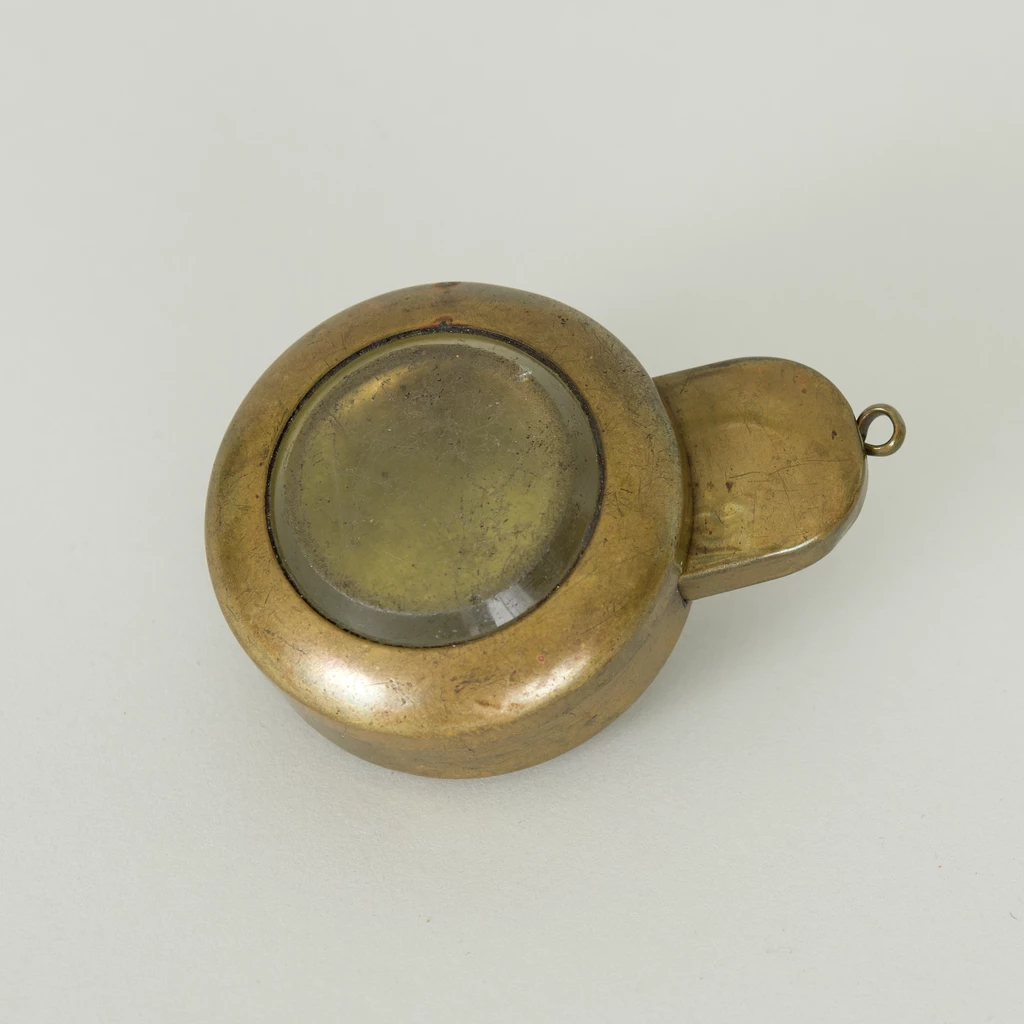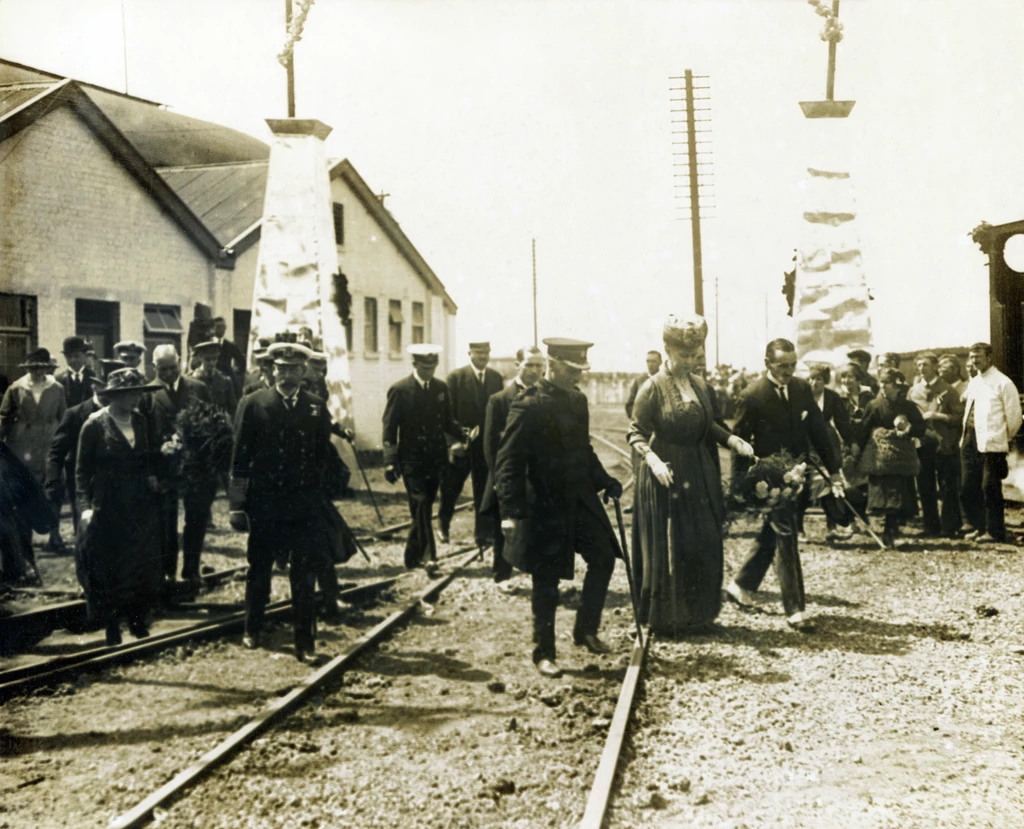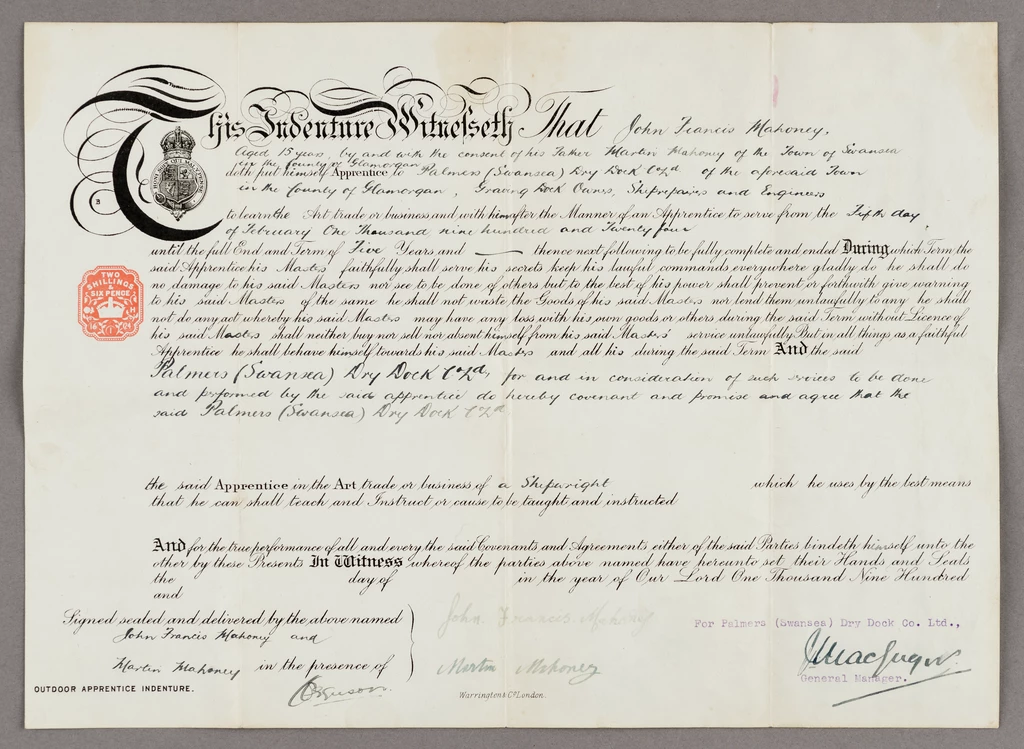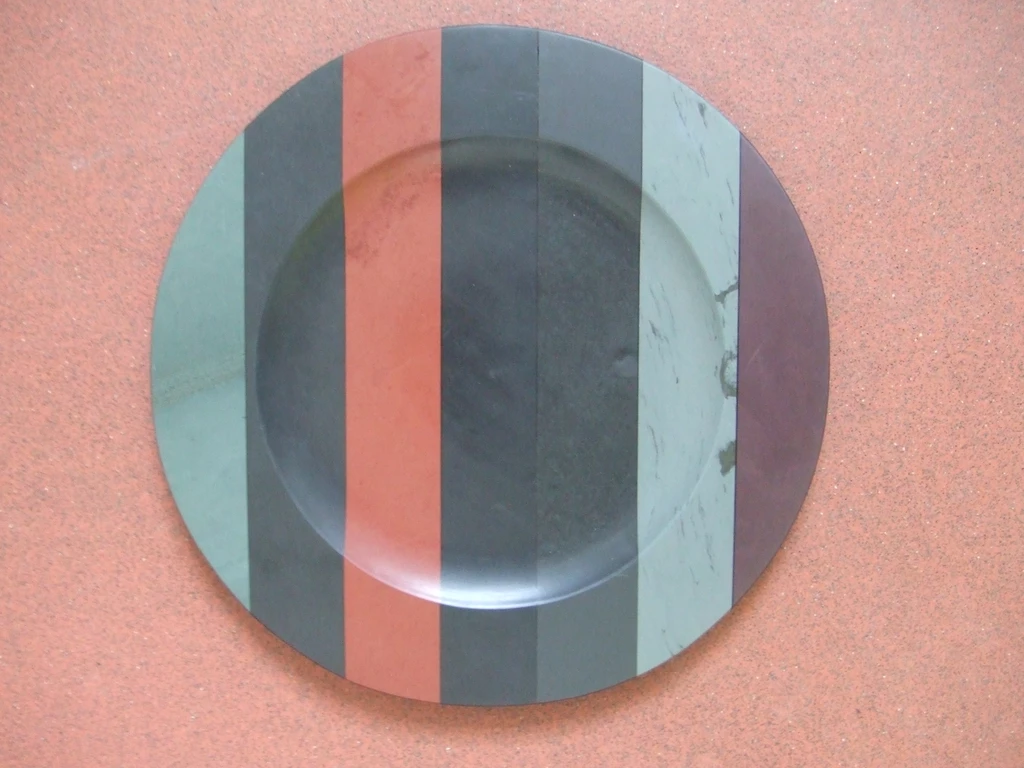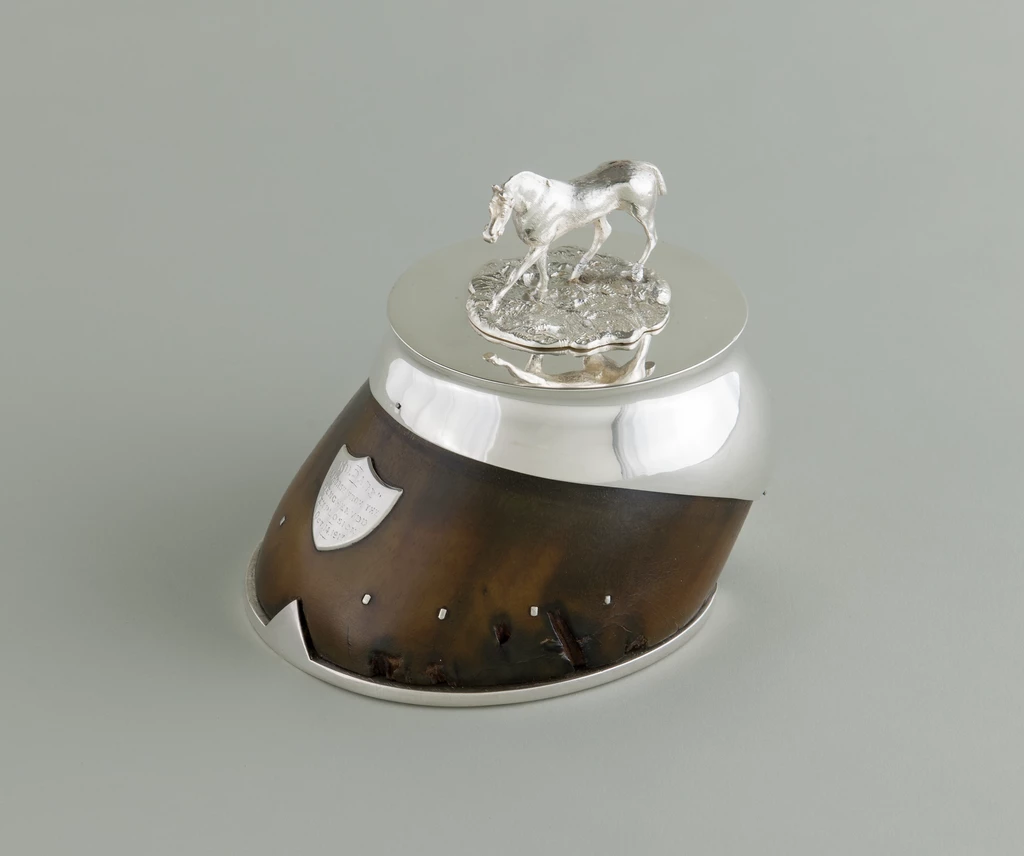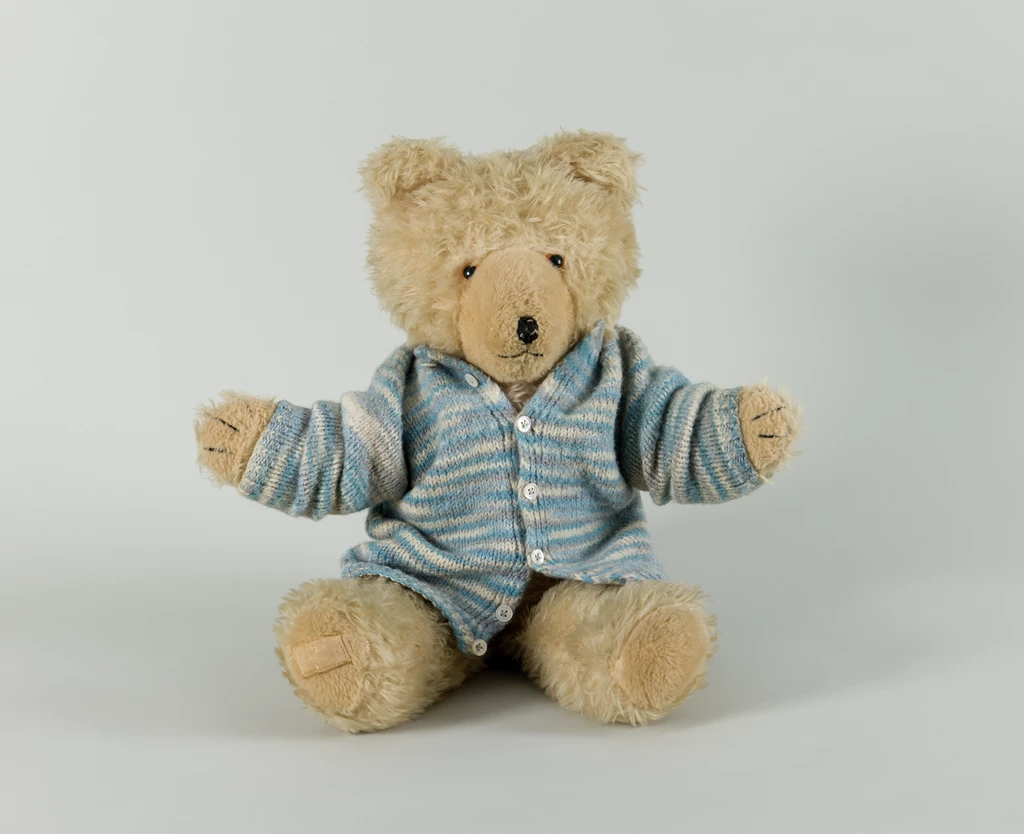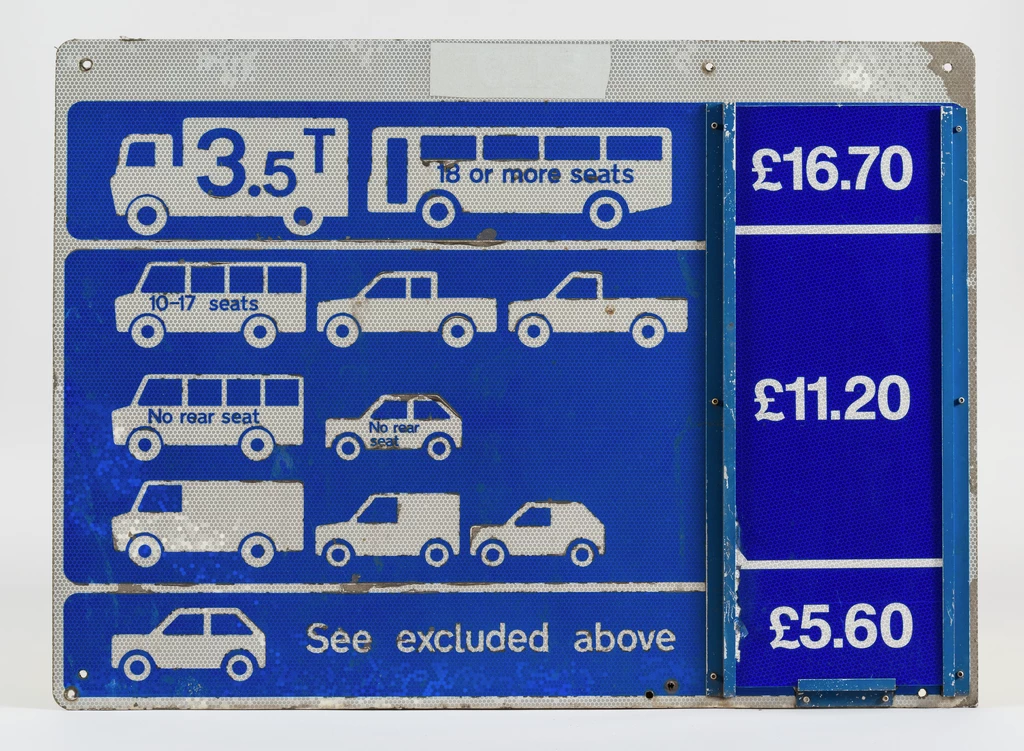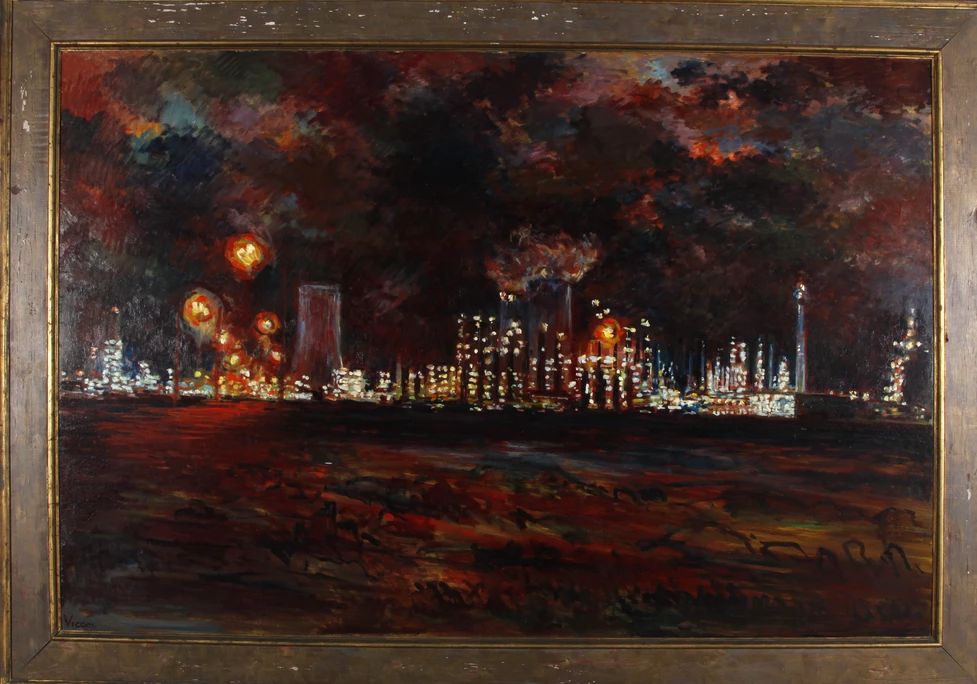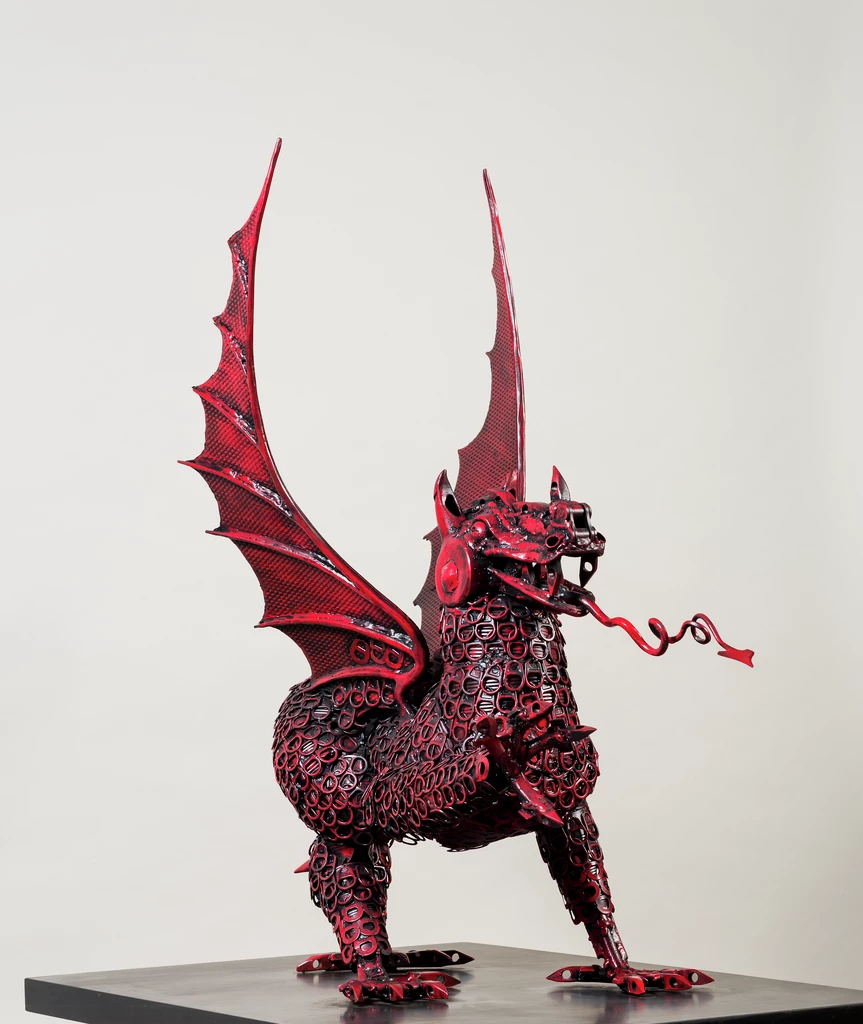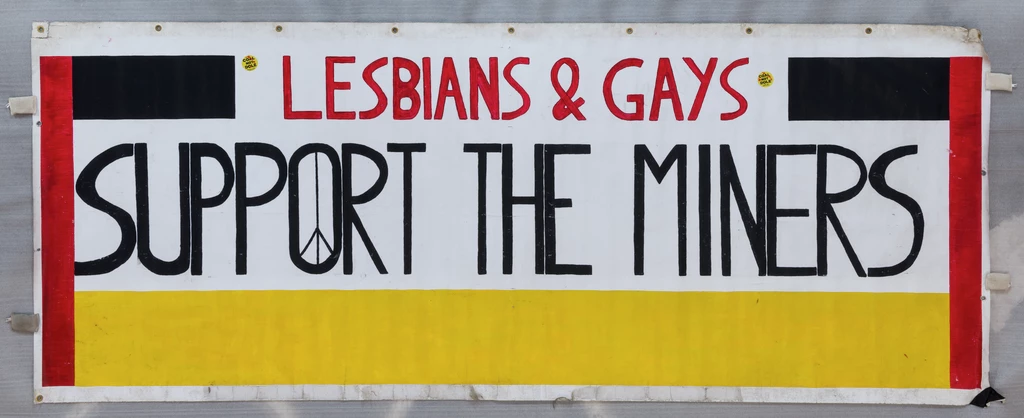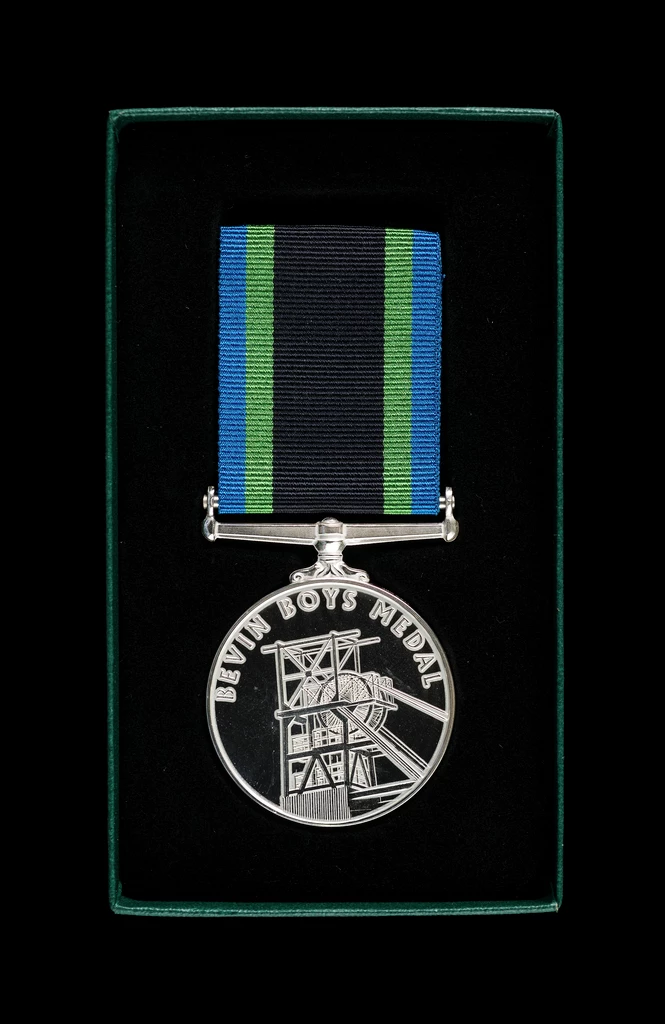A Celebration of 15 Objects for 15 Years 2005-2020
This October, the National Waterfront Museum celebrates its fifteenth birthday.
The museum was established through an innovative partnership between Amgueddfa Cymru – National Museum Wales and the City & County of Swansea. Also assisted by generous grants from the Heritage Lottery Fund, the European Regional Development Fund and other organisations.
It occupies an historic dock-side warehouse from about 1900 and a purpose-built gallery and entrance hall, designed by the award-winning architects Wilkinson Eyre. It opened on 17 October 2005 and by its fifteenth birthday will have received over two and a half million visits.
As part of our celebrations we have put together a small display of fifteen things that have been donated to the industry collections of Amgueddfa Cymru-National Museum Wales. The museum is able to display these objects and preserve them for future generations because of the generosity of the people of Wales. Without your support we could not tell the exciting story of Welsh industry and innovation.
We would like to say a big thank you to all our visitors and other supporters for helping us thrive over the last fifteen years.
Milfraen watch case
Milfraen Colliery was a sister pit to Big Pit, it was situated about a mile away and looked almost identical. Both collieries were owned by the Blaenavon Iron and Steel Company. On the 10th July 1929 an explosion underground resulted in the deaths of nine men. The cause was later determined to be the result of poor ventilation which led to a build-up of ‘fire damp’ (a mixture of gases, mainly methane) which was ignited by electrical sparks from a faulty coal-cutting machine. This watch case, known as a ‘turnip’, was owned by David John Parry, a 37 years old collier who was killed in the disaster and only recognised by this watch case which was found on the body.
Photo of King George V and Queen Mary opening Kings Dock Tinplate Works, Swansea 1920
The royal party and civic dignitaries pick their way across railway tracks having entered the works between a pair of temporary obelisks made of sheets of tinplate and supporting an arch of greenery. Royal visits to industry were rare before the Second World War. This was a side-visit from laying the foundation stone of Swansea University.
Apprenticeship indenture for John Francis Mahoney, aged 15, of Swansea) as a ship repairer and engineer with Palmers (Swansea) Dry Dock Company Limited
A legal agreement setting out the trade to be learnt over a number of years, the premium payment paid by the boy’s father to the employer, and wages to be paid to the apprentice. For hundreds of years an indentured apprenticeship was seen as a passport to a skilled trade giving secure employment. Some boys enjoyed ‘serving their time’; some detested it; others simply endured it.
Commemorative Slate Plate
A slate plate created by using seven different ‘bands’ of slate from north Wales and the USA (the Welsh slates were sourced from Penrhyn, Llechwedd, Corris, Ffestiniog, and Dyffryn Nantlle, whilst the American slate are American ‘Red’ and ‘Unfading Green’). This plate is one of a pair, made by the late Mr William J. (‘Bill’) Rice, commemorating the twinning of the National Slate Museum with the Slate Valley Museum, Granville, USA, in May 2007.
Great Western Railway jigsaw puzzle of Swansea Docks, about 1927
From 1924 to 1939 the GWR sold 46 different jigsaw puzzles showing railway subjects and tourist destinations served by its railways and steamships. Among them was a puzzle showing a decidedly industrial image of Swansea Docks, which – unsurprisingly – appears to have been a less popular design. In recent years, modern replicas have been produced.
Novelty golf balls
These were produced during the 1984-85 Miners’ Strike and depict four of the major political figures at the time. The first is the prime minister, Margaret Thatcher, who led a Conservative government which was determined to break the power of the trade unions, the most powerful of them being the National Union of Mineworkers (NUM). She is dressed in her characteristic blue suit and sports a Tory rosette. Next is her main opponent, Arthur Scargill, president of the NUM, who is dressed as a coal face worker and carries the iconic miners’ pick and flame safety lamp. Third is Neil Kinnock, the Labour leader, who waves a socialist red flag and carries a microphone. The last cartoon shows Norman Tebbit, the Conservative Secretary of State for Trade and Industry. Tebbit is dressed as a leather clad skinhead with a British bulldog at his side. These cartoons are based on the characters portrayed in the ‘Spitting Image’ satirical television show first broadcast in February 1984 and ran for over ten years.
Souvenir guide of the Liverpool and North Wales Steamship Company Limited, about 1955
Established in 1890, the company ran a passenger steamship service between Liverpool, Holyhead, Llandudno, the Menai Straits Piers and Bangor, until declining markets lead to its winding up in 1962. In the early and mid 20th century its pleasure steamers were a much loved part of tourists’ experiences of the North Wales coastal resorts. In 2016 a new company with the same name resumed sailings.
‘Senghenydd hoof’
A silver plated horse’s hoof presented to Reginald Mortimer, of Standard Colliery, Ynyshir, Rhondda, for his work with injured horses following the explosion at the Universal Colliery, Senghenydd. This disaster caused the deaths of 439 men and boys in the history of the British coal industry. The plaque states that ‘Kildare’ was the first horse brought up from underground flowing the explosion, but whether he was alive or dead is not stated. There is very little detail of the fate of the Colliery horses following the disaster recorded.
Wendy Boston Bears
Wendy Boston Bears was the brainchild of Ken Williams and his wife Wendy (maiden name Boston). When the couple were bombed out of their house in the midlands they decided to make a new start and moved to Crickhowell. Times were hard so Wendy began making soft toys to make some extra money. Ken took a box of them to Cardiff which he promptly sold for £100 – a fortune in those days! They soon formed Wendy Boston (Crickhowell) Ltd. At its height the company employed over 250 workers (mainly women). They developed the first washable Teddy made from nylon, and they produced child-safe eyes for their toys. Wendy’s talent meant that she made special puppets for the BBC including ‘Basil Brush’ and Pinky & Perky’.
Toll sign from M48 Severn Bridge / M4 Second Severn Crossing toll plazas
From the opening of the first bridge in 1966, until the cessation of tolling in December 2018, the bridges were only tolled westbound, creating a widespread and emotive perception that whilst it was free to enter England, tolls were an unfair cost only to enter Wales. For 52 years, stopping to pay the toll seemed a symbol of arriving in Wales when travelling via the M4.
Andrew Vicari painting ‘Baglan Bay at Night’
In 2010 BP Baglan Bay were closing down their site and offered the museum a large oil painting which had been on the main office wall since the 1960s. It was a spectacular scene of the works lit up at night. Upon examination we found the signature of Andrew Vicari, one of Wales’ most famous painters and once reckoned to be the richest living artist in the world. We tracked down the artist to his home in Monaco and sent a photograph for him to verify the work. A few days later the phone rang and a deep voice said: ‘I see you’ve found the lost Vicari! I painted it in the early sixties and I was really glad of the commission’
Sculpture “The Crown dragon” / “Y ddraig Goron” by Welsh blacksmith artist David Petersen, 2011
The sculpture was commissioned by Crown Packaging Neath Works (formerly the Metal Box Company Limited) and made from can components manufactured at the works – the scales are beverage can ring-pulls. David Petersen is well known for his metal sculptures of dragons, the most famous of which is the Mametz Wood Memorial in France commemorating Welshmen killed in the First Battle of the Somme in 1916.
William Walker with his barge and barge horse on the Swansea Canal, probably near Pantyffynon, about 1914
The barge is loaded with over 20 tons of pitprops and has just left a lock to head down the canal toward Pontardawe. William Walker owned his own barge, as did his sons, and he took his horse home to his stable on Richardson Street Trebanos after each day's work. Very few photographs are known of bargemen and working barges and horses on the Swansea Canal.
Reproduction LGSM banner
In 2014 a historical comedy-drama was produced to commemorate the links between the Dulais Valley Miners’ Support Group based in the Onllwyn Welfare Hall and the Lesbian and Gay Men Support the Miners (LGSM) organisation based in the ‘Gays the Word’ bookshop in London. The 1980s were an era of homophobia and ‘trade union bashing’ and both sides found a common cause during the miners’ strike. The banner is an authentic replica of the banner made for the original LGSM and was produced by Anna Thomas a Welsh member of the design team at Pathe Films.
Bevin Boys Commemorative Medal
Medal produced by the Bevin Boys Association for those who did not qualify for the official Bevin Boys badge. Bevin Boys were young British men conscripted to work in the coal mines between December 1943 and March 1948 in order to produce more coal for the war effort. They were named after Ernest Bevin the Minister of Labour and National Service at the time who devised the scheme. The scheme caused a great deal of upset as many young men wanted to join the armed services rather than work underground. They were often abused by the general public who saw them as ‘draft dodgers’. Following pleas from the Bevin Boys Association for some kind of medal to commemorate their wartime service, the prime minister in 2007, Tony Blair, informed them that a special badge would be awarded to the veterans. This badge was distributed in 2008 but was only available to surviving Bevin Boys. In order to commemorate those who died before 2007, the Bevin Boys Association commissioned a medal which could be purchased by their surviving relatives.
